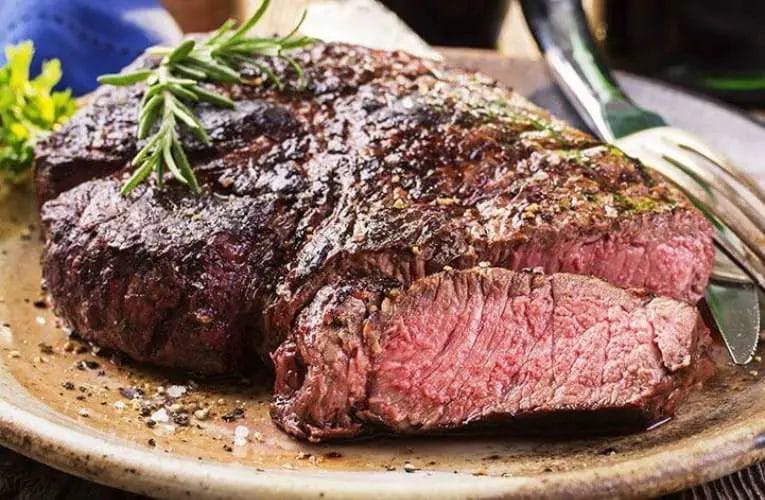Preparing bison steak is a delightful way to savor this lean and flavorful meat. With its rich taste and nutritional benefits, bison steak has gained popularity among health-conscious individuals.
In this guide, we will explore the steps to prepare a mouthwatering bison steak that will impress your taste buds and leave you craving for more.
From selecting the right cut to seasoning and cooking techniques, we will provide you with all the necessary tips and tricks to ensure a delicious and perfectly cooked bison steak.
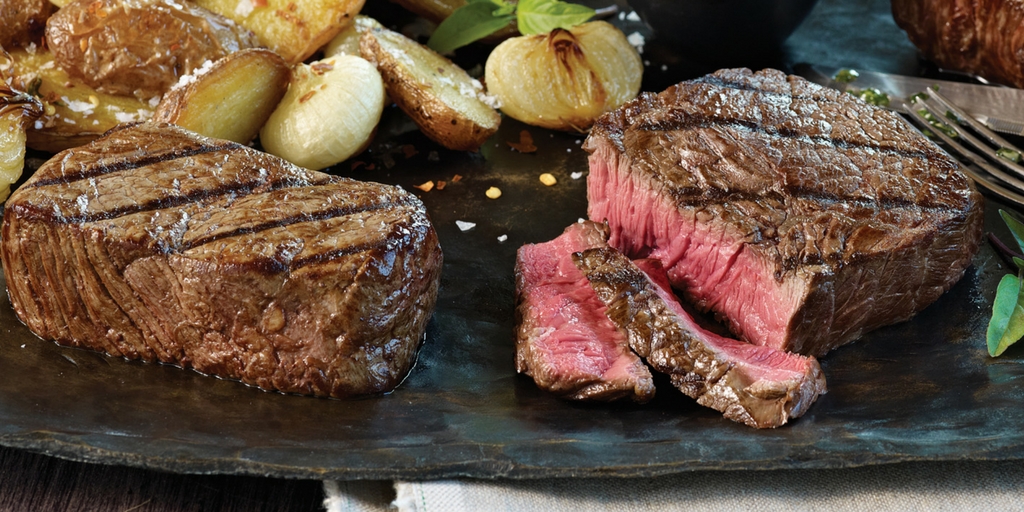
Choosing the Perfect Bison Steak Cut
When it comes to selecting the perfect bison steak cut, there are several factors to consider. The quality, flavor, and tenderness of the meat can vary depending on the cut.
In this section, we will explore the different types of bison steak cuts and provide you with valuable information to help you make the best choice for your next meal.
1. Ribeye
The ribeye cut is known for its exceptional marbling and tenderness. It is a well-marbled cut that offers rich flavor and juiciness.
The presence of fat in the meat adds to its succulence, making it a popular choice among steak lovers. The ribeye is typically cut from the rib section, resulting in a generously sized steak that is perfect for grilling or pan-searing.
2. Striploin
The striploin, also known as New York strip or Kansas City strip, is another popular bison steak cut. It is taken from the loin section of the bison, offering a tender and flavorful option.
The striploin has a good amount of marbling, which enhances its taste and juiciness. This cut is often favored by those who enjoy a leaner yet flavorful steak.
3. Tenderloin
The tenderloin, often referred to as filet mignon, is the most tender bison steak cut available. This cut is taken from the loin section of the bison and is known for its melt-in-your-mouth texture.
It has minimal fat content, making it a leaner option. The tenderloin is highly prized for its tenderness and is often considered a premium cut.
4. T-Bone
The T-bone steak is a classic favorite among steak enthusiasts. It is a combination of two cuts, the tenderloin and striploin, separated by a T-shaped bone.
This cut offers the best of both worlds, with the tender and buttery texture of the tenderloin and the rich flavor of the striploin. The T-bone steak is perfect for those who enjoy a variety of flavors and textures in one meal.
5. Flat Iron
The flat iron steak is a relatively new addition to the bison steak cuts. It is taken from the shoulder area of the bison and has a unique flat shape.
This cut offers a good balance of tenderness and flavor, making it a versatile option for various cooking methods. The flat iron steak is often marinated or seasoned to enhance its taste and is a great choice for grilling or broiling.
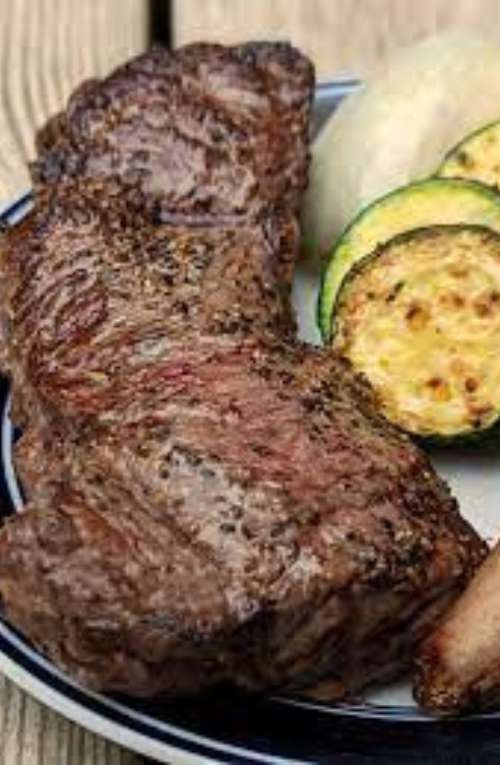
Marinades and Seasonings for Bison Steaks
When it comes to cooking bison steaks, marinades and seasonings play a crucial role in enhancing the flavor and tenderness of the meat. Whether you prefer a bold and smoky flavor or a delicate and herb-infused taste, there are various options to choose from.
In this section, we will explore some popular marinades and seasonings that will take your bison steaks to the next level.
1. Traditional Steak Marinade
A classic steak marinade is a great choice for bison steaks as it enhances the natural flavors without overpowering them. To make a traditional steak marinade, combine the following ingredients:
- 1/4 cup soy sauce
- 2 tablespoons olive oil
- 2 tablespoons Worcestershire sauce
- 2 cloves garlic, minced
- 1 teaspoon black pepper
Whisk the ingredients together in a bowl and pour the marinade over the bison steaks. Allow the steaks to marinate for at least 2 hours, or overnight in the refrigerator, for maximum flavor infusion.
2. Smoky Chipotle Rub
If you enjoy a smoky and slightly spicy flavor, a chipotle rub is the perfect choice for bison steaks. To make a smoky chipotle rub, combine the following ingredients:
- 1 tablespoon smoked paprika
- 1 teaspoon chipotle powder
- 1 teaspoon garlic powder
- 1 teaspoon onion powder
- 1 teaspoon salt
- 1/2 teaspoon black pepper
Mix the ingredients together in a small bowl and rub the mixture onto the bison steaks, ensuring that they are evenly coated. Allow the steaks to sit at room temperature for 30 minutes to allow the flavors to penetrate the meat before grilling or searing.
3. Herb Infused Marinade
For a fresh and herbaceous flavor profile, an herb-infused marinade works wonders with bison steaks. Here’s a simple recipe for an herb-infused marinade:
- 1/4 cup olive oil
- 2 tablespoons fresh lemon juice
- 2 tablespoons chopped fresh herbs (such as rosemary, thyme, and parsley)
- 2 cloves garlic, minced
- 1/2 teaspoon salt
Combine all the ingredients in a bowl and whisk until well combined. Pour the marinade over the bison steaks and let them marinate for at least 1 hour, or up to 4 hours, in the refrigerator. This will infuse the steaks with a delightful herb-infused flavor.
4. Sweet and Tangy Glaze
If you prefer a sweet and tangy flavor profile, a glaze made with honey and balsamic vinegar is a great option for bison steaks. Here’s how you can make a sweet and tangy glaze:
- 1/4 cup balsamic vinegar
- 2 tablespoons honey
- 2 tablespoons Dijon mustard
- 1 clove garlic, minced
- 1/2 teaspoon salt
In a small saucepan, combine all the ingredients and heat over medium heat. Cook until the glaze thickens slightly, about 5 minutes. Brush the glaze onto the bison steaks during the last few minutes of cooking, allowing it to caramelize and create a flavorful coating.
5. Bold and Spicy Cajun Seasoning
If you crave a bold and spicy kick, a Cajun seasoning blend is an excellent choice for bison steaks. Here’s a simple recipe for a homemade Cajun seasoning:
- 2 tablespoons paprika
- 1 tablespoon garlic powder
- 1 tablespoon onion powder
- 1 tablespoon dried oregano
- 1 tablespoon dried thyme
- 1 tablespoon cayenne pepper
- 1 teaspoon salt
- 1 teaspoon black pepper
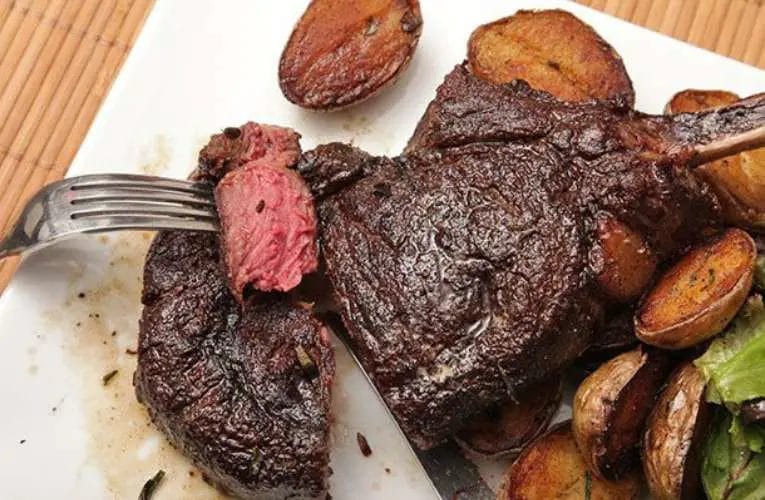
Grilling Techniques for a Perfect Bison Steak
Grilling a bison steak can be a delicious and satisfying experience. Whether you are a seasoned griller or a beginner, it’s important to know the right techniques to ensure that your bison steak turns out perfectly cooked, juicy, and full of flavor.
In this section, we will explore some tried and true grilling techniques that will help you achieve that perfect bison steak every time.
1. Preparing the Bison Steak
Before you start grilling, it’s essential to properly prepare your bison steak. Start by removing the steak from the refrigerator and letting it come to room temperature for around 30 minutes. This will allow for more even cooking.
Next, season the steak with your choice of spices or marinade. Bison meat has a rich, slightly sweet flavor, so it pairs well with a variety of seasonings.
Common choices include garlic powder, onion powder, salt, pepper, rosemary, and thyme. Apply the seasonings generously, ensuring that they are evenly distributed on both sides of the steak.
2. Preheating the Grill
The key to achieving a perfectly grilled bison steak is to preheat your grill properly. Start by cleaning the grill grates thoroughly to remove any residue from previous grilling sessions. Preheating will help ensure even cooking and prevent the steak from sticking to the grates.
For gas grills, preheat on high for around 10-15 minutes with the lid closed. If you are using a charcoal grill, light the charcoal and let it burn until the coals are covered in white ash. Then, spread the coals evenly across the grill.
3. Grilling the Bison Steak
Once the grill is preheated, it’s time to start grilling your bison steak. Carefully place the steak on the grill grates at a 45-degree angle. This will create beautiful grill marks and allow for even heat distribution.
Cook the steak for about 3-4 minutes on each side for a medium-rare doneness. Adjust the cooking time based on your desired level of doneness. Keep in mind that bison meat is leaner than beef, so it cooks faster.
Using a meat thermometer, check the internal temperature of the steak. For medium-rare, it should read between 130-135°F (54-57°C).
4. Resting and Serving
Once your bison steak has reached the desired doneness, remove it from the grill and let it rest for about 5 minutes. This allows the juices to redistribute throughout the meat, resulting in a more tender and flavorful steak.
After resting, it’s time to serve and enjoy your perfectly grilled bison steak. Slice the steak against the grain to ensure tenderness and serve it with your favorite side dishes or sauces.
5. Additional Tips
Here are a few additional tips to keep in mind when grilling bison steak:
- Use a meat thermometer to ensure accurate and consistent cooking.
- Avoid excessively flipping the steak, as this can lead to uneven cooking and loss of juices.
- Experiment with different seasonings and marinades to enhance the flavor of your bison steak.
- Consider using indirect grilling for thicker cuts of bison steak to ensure even cooking.
- If using a marinade, pat the steak dry before grilling to prevent flare-ups.
By following these grilling techniques, you can achieve a perfectly cooked bison steak that is juicy, flavorful, and sure to impress your guests. So fire up the grill, get your bison steak ready, and enjoy the deliciousness that awaits!
Alternative Cooking Methods for Bison Steaks
Bison steaks are known for their rich flavor and lean meat. While grilling is a popular cooking method for bison steaks, there are several alternative ways to prepare this delicious cut of meat.
In this section, we will explore some creative cooking techniques that will help you elevate your bison steak experience.
1. Sous Vide
Sous vide is a French cooking technique that involves sealing the bison steak in a vacuum-sealed bag and cooking it in a water bath at a precise temperature for an extended period.
This method allows for precise control over the cooking temperature and ensures that the meat cooks evenly from edge to edge.
To cook bison steaks sous vide, simply season the steak with your desired spices and place it in a vacuum-sealed bag. Set your sous vide machine to the recommended temperature (typically around 130°F for medium-rare) and let the steak cook for several hours.
Once done, sear the steak briefly in a hot pan or on a grill to develop a flavorful crust.
2. Pan-Seared
Pan-searing is a quick and easy method that results in a juicy and flavorful bison steak. Start by seasoning the steak with salt, pepper, and any other desired herbs or spices.
Heat a skillet over medium-high heat and add a little oil. Once the skillet is hot, place the steak in the pan and cook for a few minutes on each side until browned.
For a perfect medium-rare steak, cook the bison steak to an internal temperature of 145°F. Adjust the cooking time based on your desired level of doneness. Once cooked, let the steak rest for a few minutes before slicing and serving.
3. Broiled
Broiling is an excellent cooking method for bison steaks as it allows for quick and even cooking while sealing in the juices. To broil a bison steak, preheat your oven’s broiler on high heat and position the oven rack so that the steak will be about 4 inches away from the heat source.
Season the steak with your favorite spices and place it on a broiler pan or a wire rack set over a baking sheet. Broil the steak for about 4-6 minutes per side, depending on the thickness and desired level of doneness. Remember to keep a close eye on the steak as it can cook quickly under the broiler.
4. Slow Cooked
Slow cooking is a fantastic way to tenderize bison steaks and infuse them with deep flavors. This method is ideal for tougher cuts of meat that may require a longer cooking time. To slow cook bison steaks, you can use a slow cooker or a Dutch oven.
Season the steaks with your preferred spices and sear them in a hot skillet on all sides to develop a rich crust.
Transfer the steaks to the slow cooker or Dutch oven, and add in your choice of vegetables, herbs, and liquids like broth or red wine. Cook the steaks on low heat for several hours or until the meat is tender and easily pulls apart.
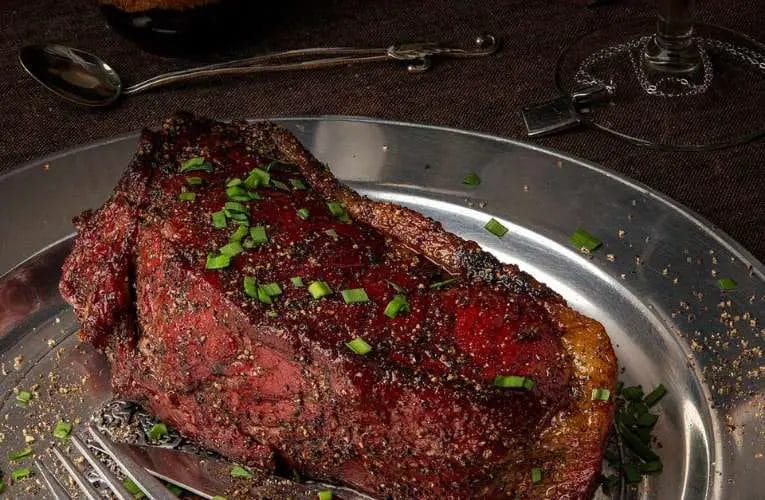
Tips for Serving and Pairing Bison Steaks
When it comes to cooking and serving bison steaks, there are a few key tips to keep in mind to ensure a delicious and flavorful meal.
Additionally, selecting the right beverages and sides to pair with bison can enhance the overall dining experience. In this section, we will explore some helpful tips for serving and pairing bison steaks.
1. Choosing the Right Cut
Before we dive into the serving and pairing tips, it is important to choose the right cut of bison steak. Popular cuts include ribeye, filet mignon, striploin, and sirloin.
Each cut has its own unique flavor and tenderness, so consider your personal preferences and cooking methods before making a selection.
2. Seasoning and Marinating
To enhance the flavor of bison steaks, it is recommended to season them with a blend of herbs and spices. A simple mixture of salt, pepper, garlic powder, and onion powder can go a long way in enhancing the natural flavors of bison.
If you prefer a more complex flavor profile, consider marinating the steaks in a mixture of oil, vinegar, and your choice of herbs and spices for at least an hour before cooking.
3. Cooking Techniques
Bison steaks are best cooked using dry heat methods such as grilling, broiling, or pan-searing. These techniques help to maintain the tenderness and juiciness of the meat.
It is important to cook bison steaks to medium-rare or medium doneness to avoid overcooking and drying out the meat. Use a meat thermometer to ensure the internal temperature reaches around 135°F (57°C) for medium-rare or 145°F (63°C) for medium.
4. Resting and Slicing
After cooking, it is important to let the bison steaks rest for a few minutes before slicing and serving. This allows the juices to redistribute and results in a more tender and flavorful steak. Slice the steaks against the grain into thin slices for optimal tenderness.
5. Pairing with Beverages
When it comes to pairing bison steaks with beverages, opt for bold and robust flavors that can complement the rich and slightly gamey taste of the meat.
Red wines such as Cabernet Sauvignon, Malbec, or Syrah are excellent choices to enhance the flavors of bison. For non-alcoholic options, consider pairing with a full-bodied craft beer or a fruity iced tea.
6. Suggested Side Dishes
Choosing the right side dishes can further enhance your bison steak dining experience. Consider serving roasted vegetables such as carrots, Brussels sprouts, or asparagus for a nutritious and flavorful accompaniment.
Creamy mashed potatoes or a wild rice pilaf can also be great options to complement the richness of the bison. Don’t forget to add a fresh green salad or a tangy vinaigrette-based coleslaw for a refreshing and light contrast.

FAQs
How do I prepare bison steak?
To prepare bison steak, start by preheating your grill or skillet to high heat. Season the steak with salt, pepper, and any desired herbs or spices.
Cook the steak for about 4-5 minutes per side for medium-rare, or adjust the cooking time according to your preferred level of doneness. Rest the steak for a few minutes before serving to allow the juices to redistribute.
Conclusion
In conclusion, preparing a delicious bison steak requires a few key steps. Firstly, marinating the meat with a flavorful blend of herbs and spices will enhance its taste and tenderness.
Secondly, using a hot grill or skillet to sear the steak to perfection will help to lock in its natural juices. Don’t forget to let the steak rest before slicing it, as this will allow the flavors to settle and ensure a juicier outcome.
Lastly, serving the bison steak with a complementary sauce or side dish will elevate the overall dining experience. By following these steps, you can confidently prepare a mouthwatering bison steak that is sure to impress your guests.

